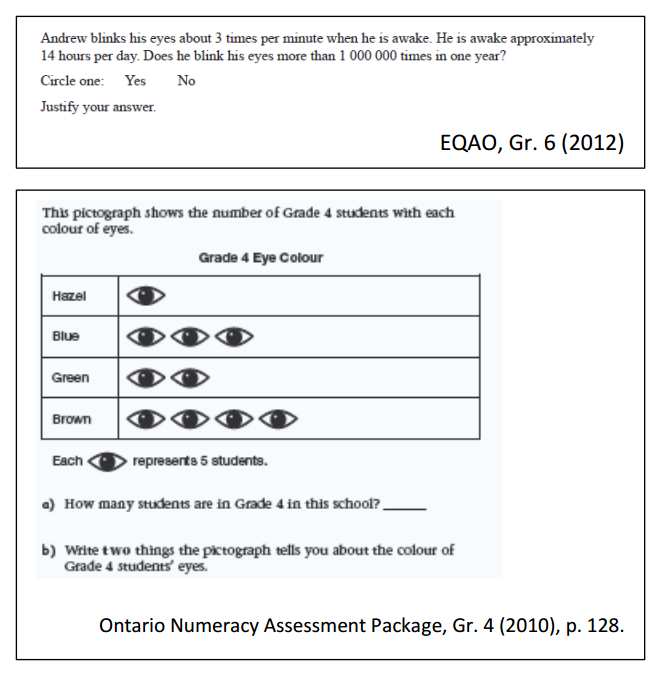Students often encounter a situation in math where they don’t know immediately what to do. Instead of moving quickly and applying known procedures incorrectly in hope of a solution, think about what the world’s best do!
Problem-solving is what we do when we don’t know what to do.
The world’s best problem-solvers thrive in these situations because not knowing immediately triggers a process in their brains to allow them to slow down and begin to make sense of the situation.
Consider the two problems below:

Students who do not activate a thinking process may begin to multiply numbers together in the ‘blinking’ question and may ignore the legend showing the proportion of the eye image in the ‘eye colour’ problem.
The Programme for International Student Assessment (PISA), an assessment of 15 year-olds around the world, finds similar results: students who rely on memorization fair much more poorly than those who rely mainly on making connections and seeking to understand the situation.

How do we get our children to do what the best do?
First: Understand the Problem
Prompts: What is the problem asking or telling us to do? What do we know from the problem that might help us? How could I draw or build what is going on here? What math does this remind me of?
Second: Make a Plan
Prompts: Think back to strategies I’ve used before: what could I try to use to solve this?
Third: Carry Out the Plan
Prompts: Try it! If it doesn’t work as you had hoped, switch to a different plan.
Fourth: Look Back
Prompts: Does my solution make sense? Does it fit what the question asked or told me to do? How can I check my thinking to be sure?
Try this with your child:
Understand but don’t solve: Take a problem and invite him to tell you the ‘gist’ of the problem. “Without using any numbers, tell me what is going on in the problem and ‘the general idea’ of what we must do.”
Represent but don’t solve: Take a problem and invite her to draw or build a model that helps her to understand the math and find a way ‘in’ to solving it.
Critical thinking and creativity are the keys to being a good problem solver. We can encourage our children to take their time to do just that.
Editor’s Note:
The following information was sent out by Scott Armstrong (Learning Supervisor of Math) and Chris Silcox (Learning Coordinator) to be inserted into school newsletters. Click here to download this blog as a document!